Oldest House in Greenwich – circa 1845
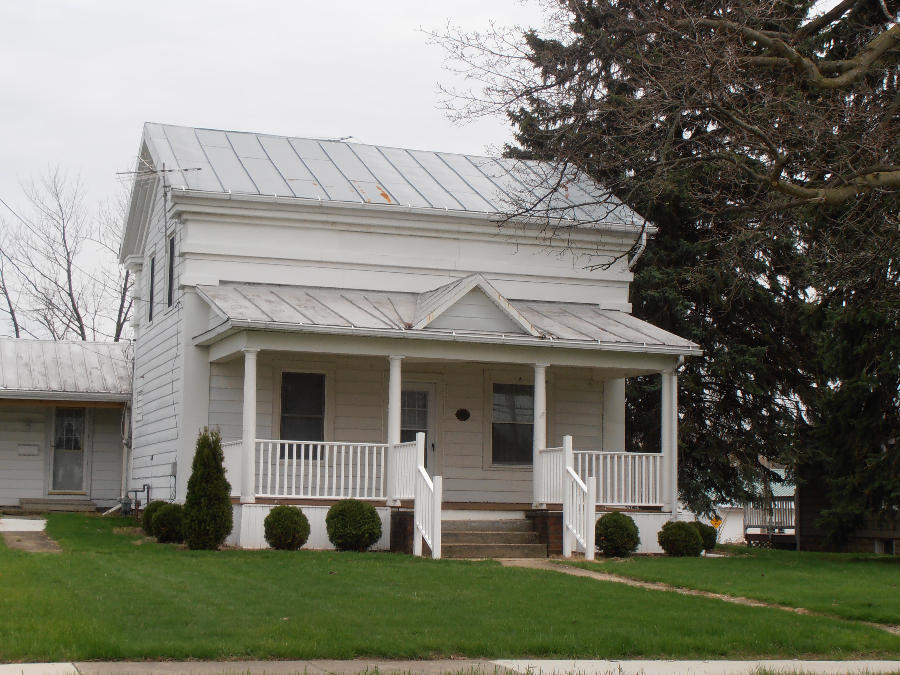
The 1845 Hiram Townsend Farm house on Townsend Street in Greenwich. this photo was taken in late April 2015
The first settler was Henry Carpenter who came to the area in 1817. There was no one living in the area prior to Carpenter’s arrival. Henry died in 1818 from over exertion at a house raising. His child Abner was the first born in the township. E.F. Barker was the second family to arrive. His place of residence was on an 8.75 acre lot which is now (2012) owned by the village of Greenwich. It was located in the south west corner of the lagoons farm just north of the village. (p.81)
In 1821 Hiram Townsend bought 132 acres in what is now Greenwich. The Cleveland, Columbus and Cincinnati Railroad was chartered in 1836 and the process of purchased right-of-ways started in the early 1840s. Early landowners, such as the Kniffins, Hiram Townsend and others fought the coming railroad with several lawsuits for a time but in the late 1840’s Hiram Townsend sold ten acres to the Big Four Railroad for a roadbed, depot, and a park. This is the area bounded by North Railroad Street, South Railroad Street, the east boundary of section 6 (about 250 feet west of Maple Street) and the east-west section line road (now U.S. 224). This cut his farm buildings off from the rest of his farm. Hiram build a lovely house (now the Church of Christ parsonage) in 1845, the oldest house in section 6 (p.82) On February 21, 1851 the first train ran from Columbus to Cleveland, through Greenwich. By 1853 the railroad was in fairly flourishing condition and there was talk of a double track. (p.20)
Greenwich 1964 – Central Plastics – Photo #4
GREENWICH, OHIO IN 1964
At some time in 1964, the Greenwich Chamber of Commerce put together a “File of Facts for Greenwich, Ohio.” This folder of materials was available to give to business owners or individuals who might be interested in locating in the village.
There were four photographs in the folder, all taken from the air by Tom Root of Plymouth, Ohio.
Photo #4 shows the Central Plastics plant on the east side of North Kniffin Street
Central Plastics 1963
1963 Greenwich Chamber of Commerce Promotion Photos
Greenwich 1964 – Akron Standard Mold – Photo #3
GREENWICH, OHIO IN 1964
At some time in 1964, the Greenwich Chamber of Commerce put together a “File of Facts for Greenwich, Ohio.” This folder of materials was available to give to business owners or individuals who might be interested in locating in the village.
There were four photographs in the folder, all taken from the air by Tom Root of Plymouth, Ohio.
Photo #3 shows the Akron Standard Mold Co. (now Versitech) on the west side of North Kniffin Street.
1964 Greenwich Chamber of Commerce Promotion Photos
Greenwich 1964 – G. S. Stewart Co. / Seminary Street – Photo # 2
GREENWICH, OHIO IN 1964
At some time in 1964, the Greenwich Chamber of Commerce put together a “File of Facts for Greenwich, Ohio.” This folder of materials was available to give to business owners or individuals who might be interested in locating in the village.
There were four photographs in the folder, all taken from the air by Tom Root of Plymouth, Ohio.
Photo #2 shows the Primary School in the lower left-hand corner, bounded by West Union Street and Center Street. The G.S. Stewart Company building is now the Johnson Brothers Company. The two areas west of the Stewart Company are outlined in black and were listed as available industrial sites, all next to rail lines.
At the far, upper left is Seminary Street which is crossed by Pleasant Street, then ending at Sunset Drive. Beyond Sunset lay land belonging to Raymond Bowerize. Eventually, Seminary Street would be extended to the west as new homes were built.
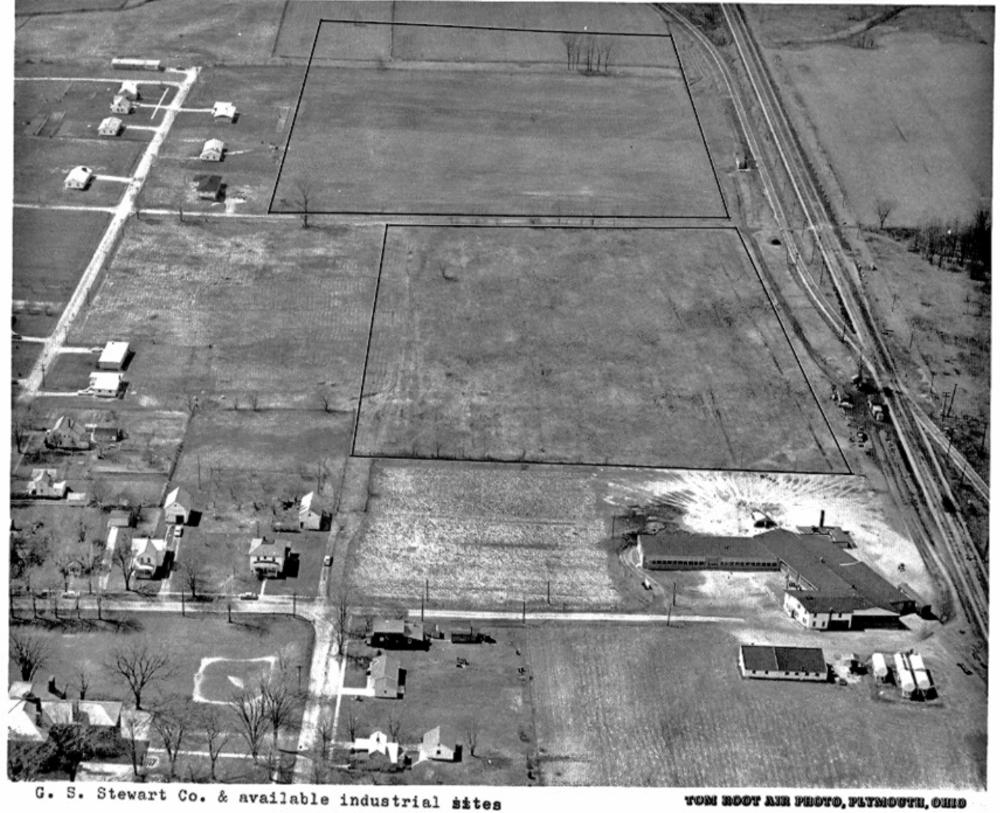
G. S. Stewart Co. – Paint by Numbers Frames. 1963 (on the Right); Seminary Street at the top left; Union Street Center Street Intersection lower Center.
1964 Greenwich Chamber of Commerce Promotion Photos
Greenwich 1964 – Aerial View of Greenwich – Photo #1
GREENWICH, OHIO IN 1964
At some time in 1964, the Greenwich Chamber of Commerce put together a “File of Facts for Greenwich, Ohio.” This folder of materials was available to give to business owners or individuals who might be interested in locating in the village.
There were four photographs in the folder, all taken from the air by Tom Root of Plymouth, Ohio.
Photo #1 is an aerial view of the village. In the center of the photo is US 224, looking east from bottom to top.
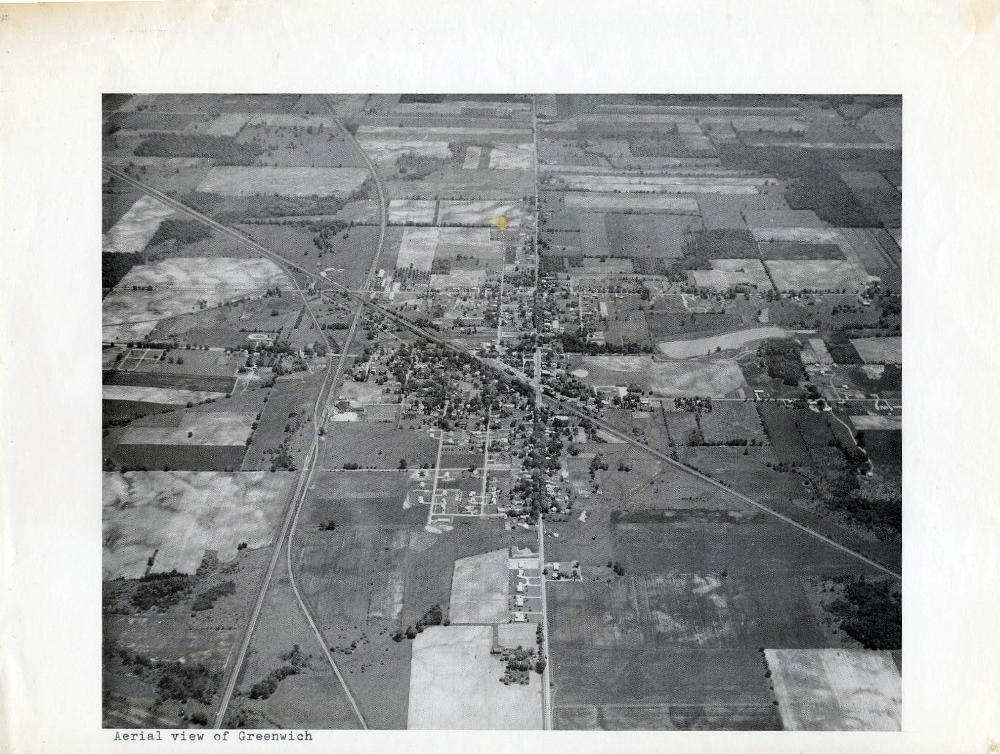
1964 Greenwich Chamber of Commerce Promotion Photo #1
Greenwich History
The Hiram Townsend Farm is shown on the above 1845 Huron County plot map. A village map of 1873 is below.
The first settler was Henry Carpenter who came to the area in 1817. There was no one living in the area prior to Carpenter’s arrival. Henry died in 1818 from over exertion at a house raising. His child Abner was the first born in the township. E.F. Barker was the second family to arrive. His place of residence was on an 8.75 acre lot which is now (2012) owned by the village of Greenwich. It was located in the south west corner of the lagoons farm just north of the village. (p.81)
In 1821 Hiram Townsend bought 132 acres in what is now Greenwich. The Cleveland, Columbus and Cincinnati Railroad was chartered in 1836 and the process of purchased right-of-ways started in the early 1840s. Early landowners, such as the Kniffins, Hiram Townsend and others fought the coming railroad with several lawsuits for a time but in the late 1840’s Hiram Townsend sold ten acres to the Big Four Railroad for a roadbed, depot, and a park. This is the area bounded by North Railroad Street, South Railroad Street, the east boundary of section 6 (about 250 feet west of Maple Street) and the east-west section line road (now U.S. 224). This cut his farm buildings off from the rest of his farm. Hiram build a lovely house (now the Church of Christ parsonage) in 1845, the oldest house in section 6 (p.82) On February 21, 1851 the first train ran from Columbus to Cleveland, through Greenwich. By 1853 the railroad was in fairly flourishing condition and there was talk of a double track. (p.20)
By 1870 houses were being built on a least two edges of his farm. Now people, eager to build near the depot, wanted his farm. Townsend died in 1871. The Greenwich Land and Building Association purchased the land in 1873 and Greenwich mushroomed. The Greenwich Land and building Association was incorporated for “the encouragement of local business interests and the development of the village.” The organization purchased the one hundred twenty acre farm and divided one-third of it into lots. The first building on one of these lots was constructed in 1874. The village grew rapidly from seventy residents in 1874 to more than five hundred in 1879. At first the new area was called Greenwich Station. Later the “Station” was dropped (p. 82).
Today Hiram Townsend’s house which he built in 1845 still stands. It is sturdy and in good repair. Some construction details, such as floor joists which are smooth on top but still have bark on the other sides, are reminders of its age. The house today serves as the parsonage for the Church of Christ and is located at 6 Townsend Street, a street named in honor of one of Greenwich’s most interesting pioneers(p.94)
Summarized from “History of the Greenwich Area” July 1979

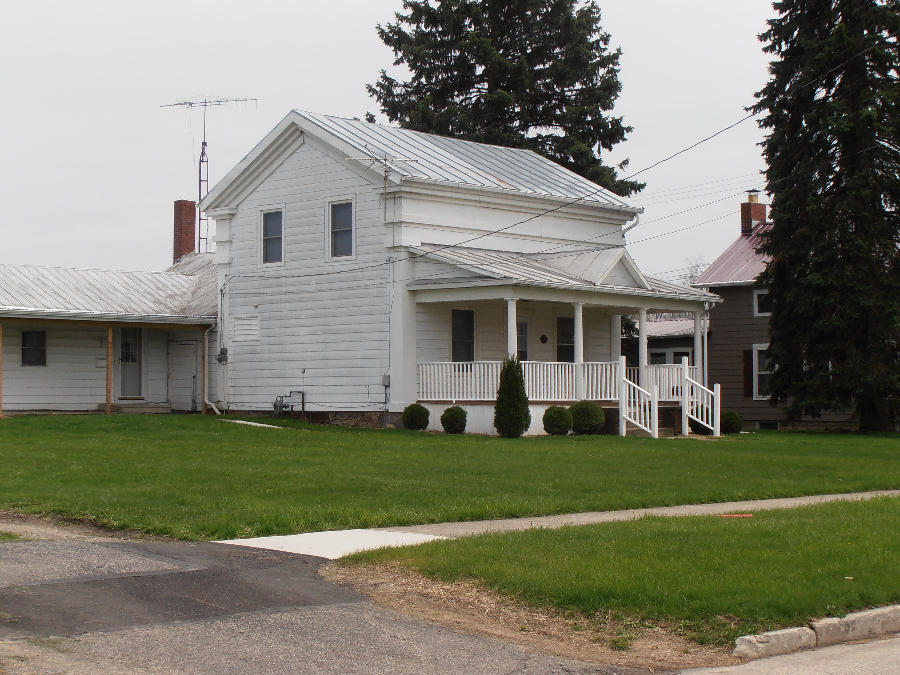
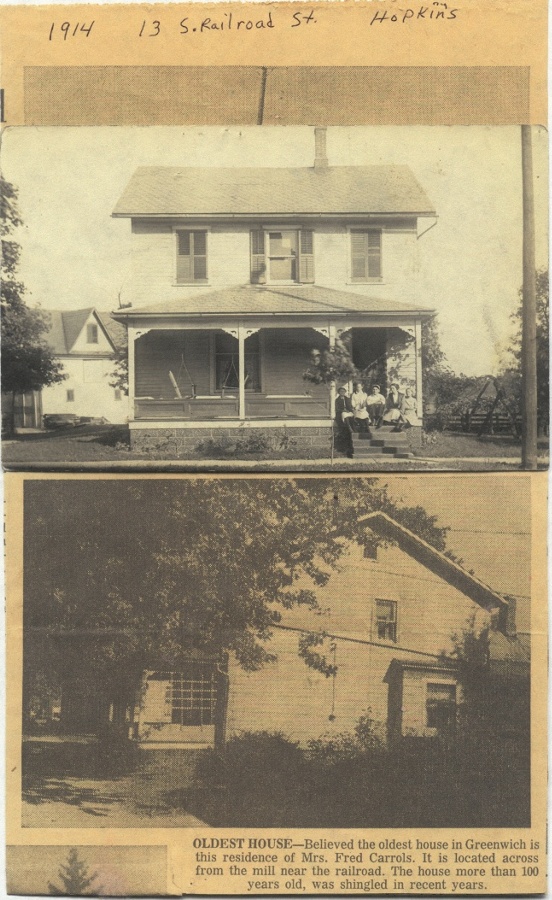
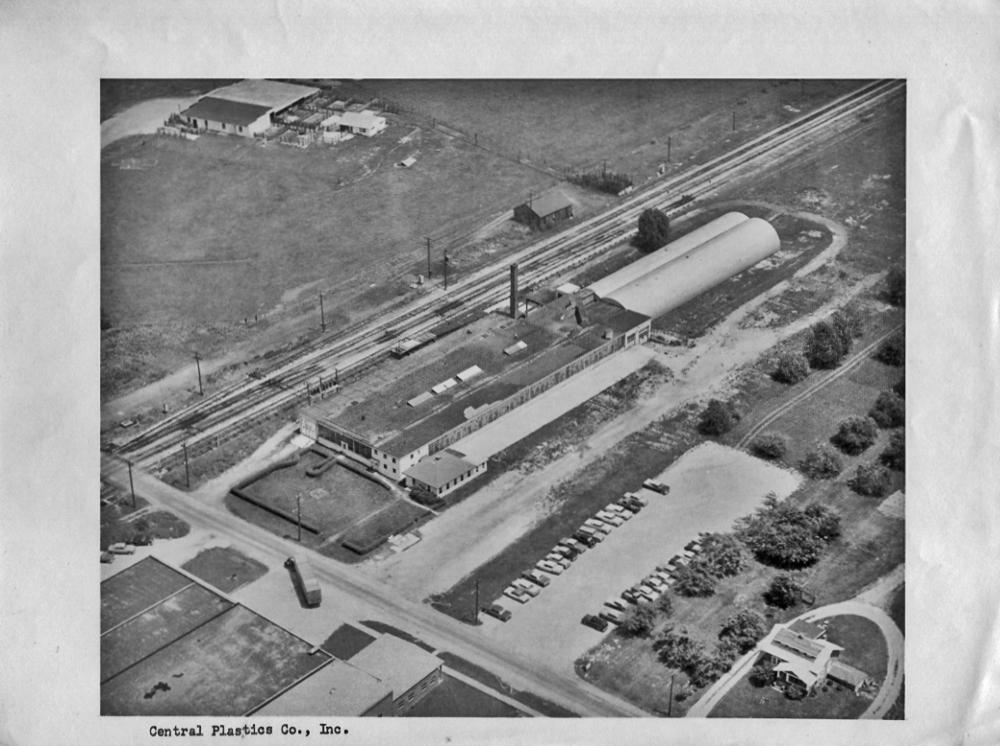
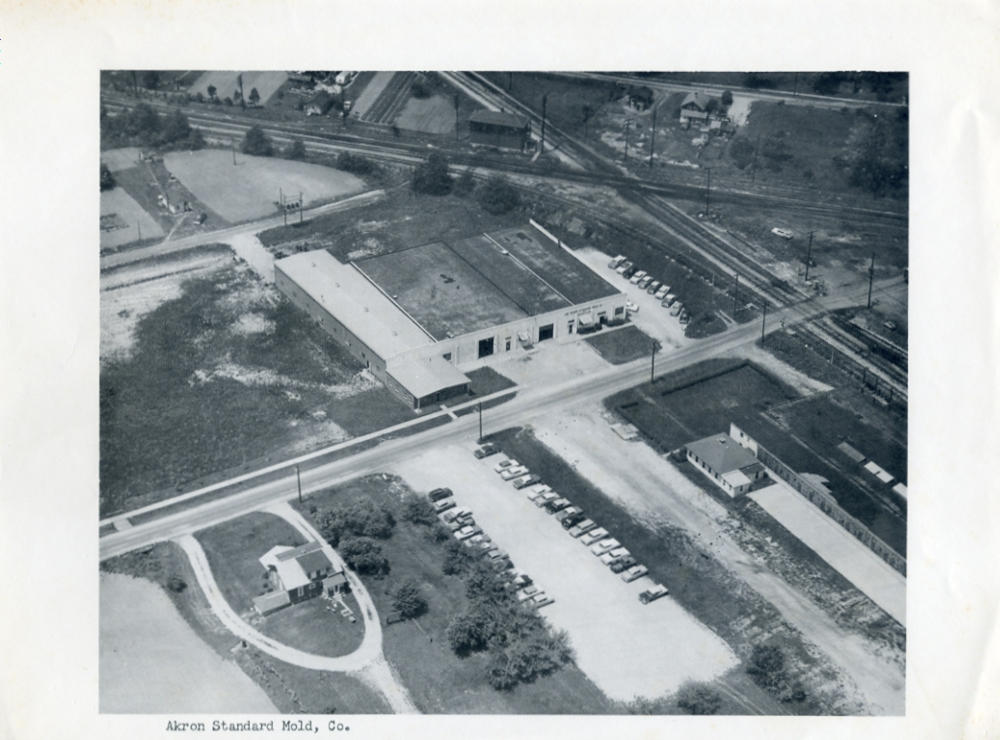



Recent Comments